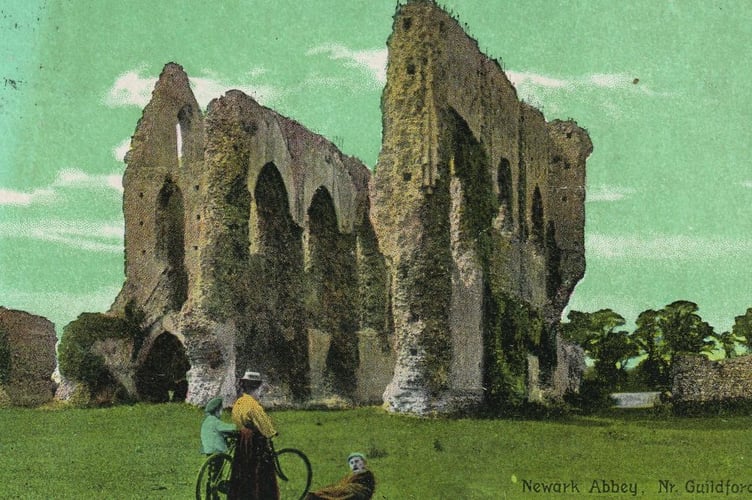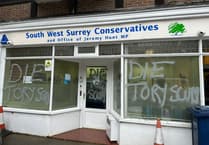THE ruins of Newark Priory now stand forlorn amid the water meadows of the River Wey between Ripley and Pyrford, but it was once a thriving community.
It was founded towards the end of the 12th century by a Ruald de Clane and his wife Beatrice of Send, and dedicated to the Virgin Mary and Thomas a Becket. The origin of its name derives from a “novo loco”, a new place for nearby monks. It later became known as Newstead and finally Newark.
On a website of the Pyrford Press, that includes a brief history of the village, it says that in the 14th century “Pyrford was a thriving community: seventy of the 170 tenants recorded around this period had their own smallholdings. At this time a resident of Pyrford would have received a penny a day for haymaking or twopence for stacking corn.”
Send & Ripley History Society’s book Newark Priory – Ripley’s Romantic Ruin, notes that it was “not only canons living at Newark, there were servants, farm workers and laity possibly even living within the precincts”. And there would have been “visitors, including pilgrims, travellers, patrons and even relatives of the brethren”.
Monasteries and similar religious houses also supported the poor and the destitute and gave help, especially in times of famine and hardship. However, they were rich and powerful institutions loyal to the Pope.
In the late 1530s Henry VIII disbanded them in England, Wales and Ireland. In doing so it left the king with a vast bank of land that he sold off. Buyers rushed to take over the assets of the monasteries, which meant they also committed themselves to Henry as head of the Church.
Newark Priory was dissolved in 1539, the prior was pensioned off, valuables items of silver sent to the Tower of London and melted down. The beneficiary of the priory was Sir Anthony Browne, who that same year was returned to parliament as knight of the shire for Surrey.
It seems that it was not long before stonework was being removed for building material elsewhere. The land was owned by Sir Anthony’s descendants until 1712, when it was sold off.

Artists have found the ruins to be an inspiration. Works include engravings dating to the 18th century, and by water-colourist Edward Hassell and the more famous JMW Turner.
And photographers taking images for early 1900s picture postcards captured the ruins, providing good comparisons to how they look today.
Not surprisingly, archaeological excavations have taken place at Newark Priory, the first thought to have been around 1840. Excavations in 1928 and 1929 by Captain CMH Pearce of the Surrey Archaeological Society resulted in detailed plans of the site being drawn up.
The late John Buckingham was a metal detectorist who spent many hours from the late 1970s to 1992 searching the fields close to the priory ruins, with the permission of its owners.
He found a good number of coins, several rings, thimbles and a small piece of metal identified as being from an enamelled cross. His finds are now in the collection at Guildford Museum.
The Exploring Surrey’s Past website notes of Newark Priory: “A good deal of flint walling remains, but there is hardly a dressed stone left, and merely tantalising imprecise holes to indicate window openings.”
Although at one time it was possible to walk among the ruins, and it’s said to have been a popular spot for a picnic, it is not accessible to the public today.
However, there are good views of it from the towpath of the River Wey Navigation and the B367 Newark Lane that is close by.
If you have some memories or old pictures relating to the Woking area, call David Rose on 01483 838960, or drop a line to the News & Mail.
David Rose is a local historian and writer who specialises in what he calls “the history within living memory” of people, places and events in the west Surrey area covering towns such as Woking and Guildford. He collects old photos and memorabilia relating to the area and the subject, and regularly gives illustrated local history talks to groups and societies. For enquiries and bookings, please phone or email him at: [email protected]




